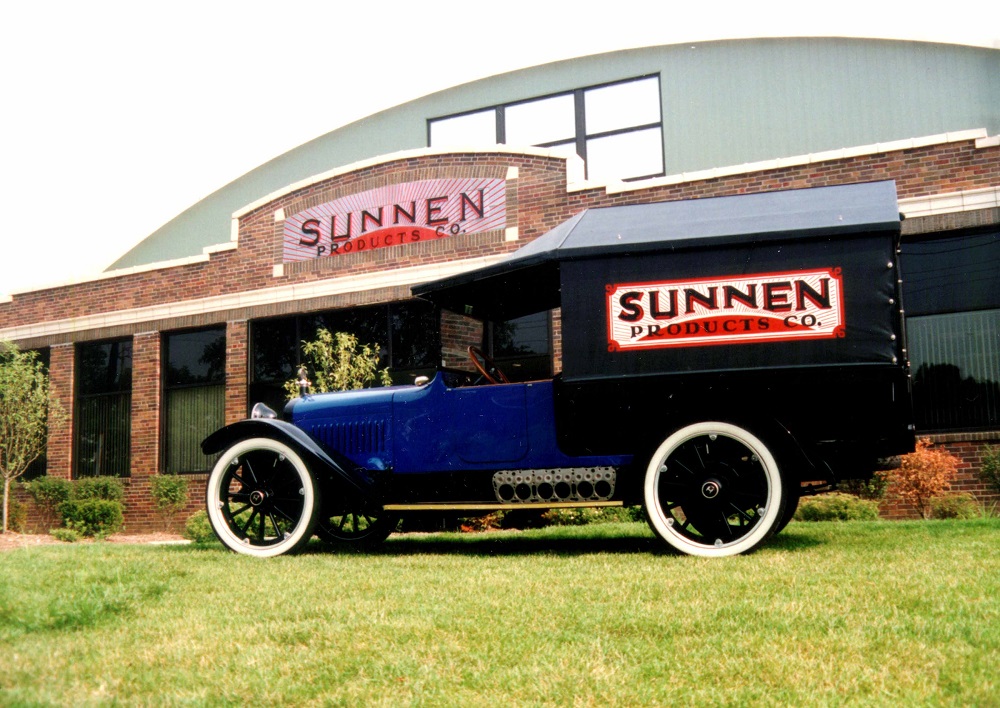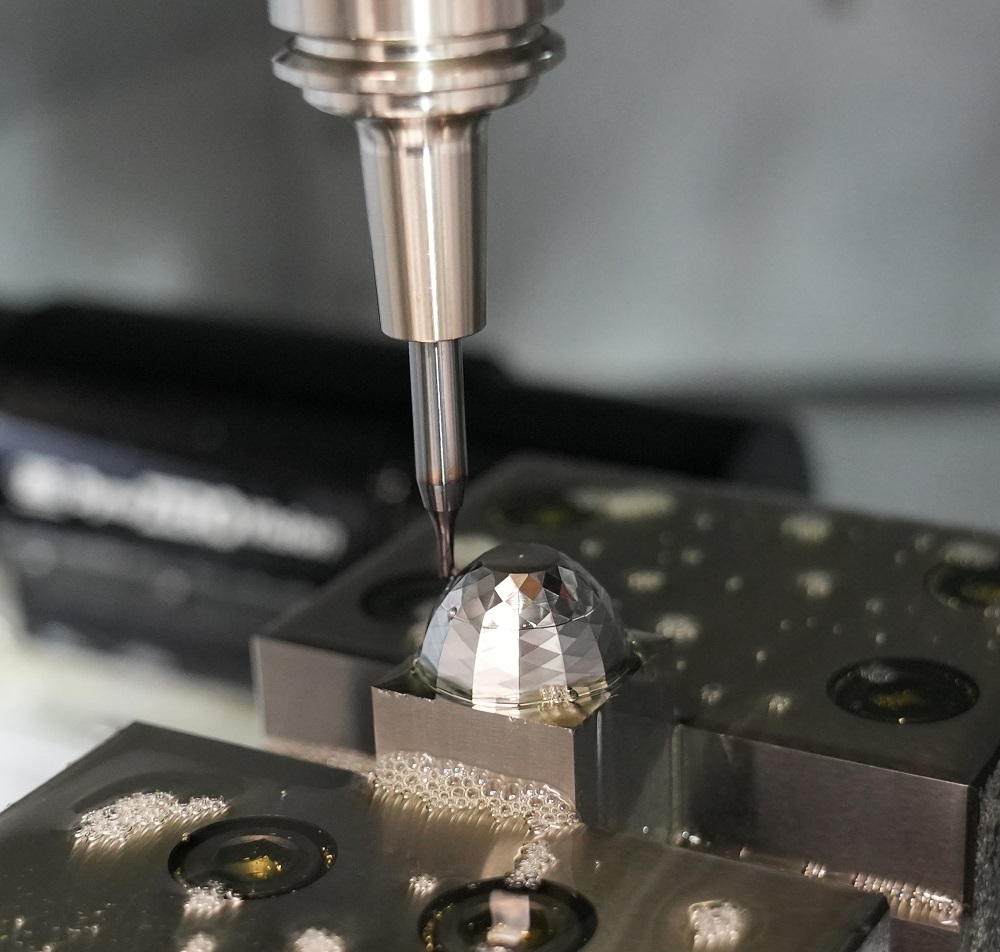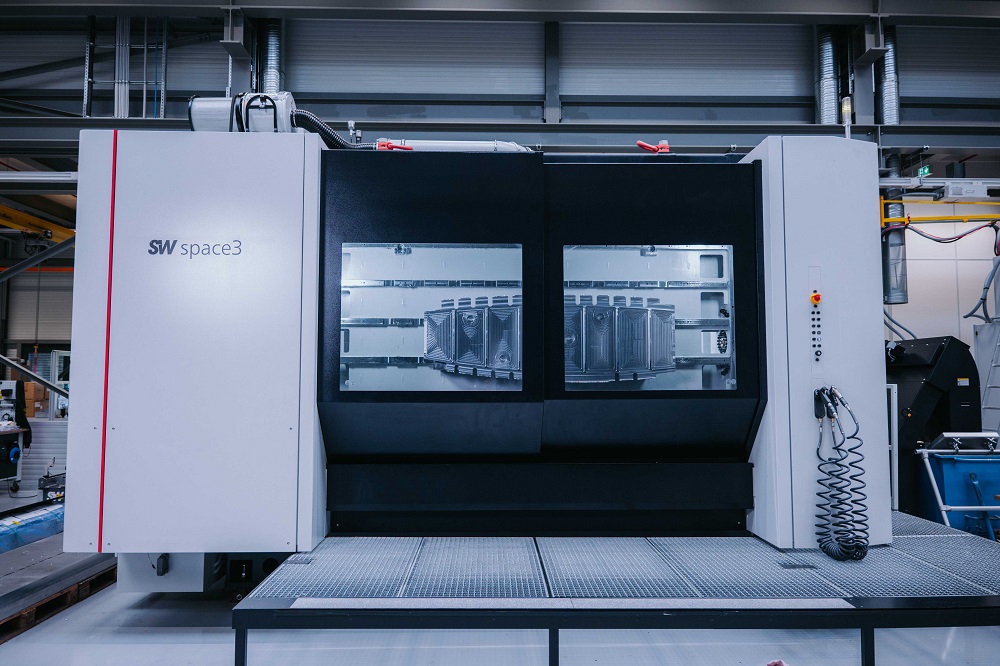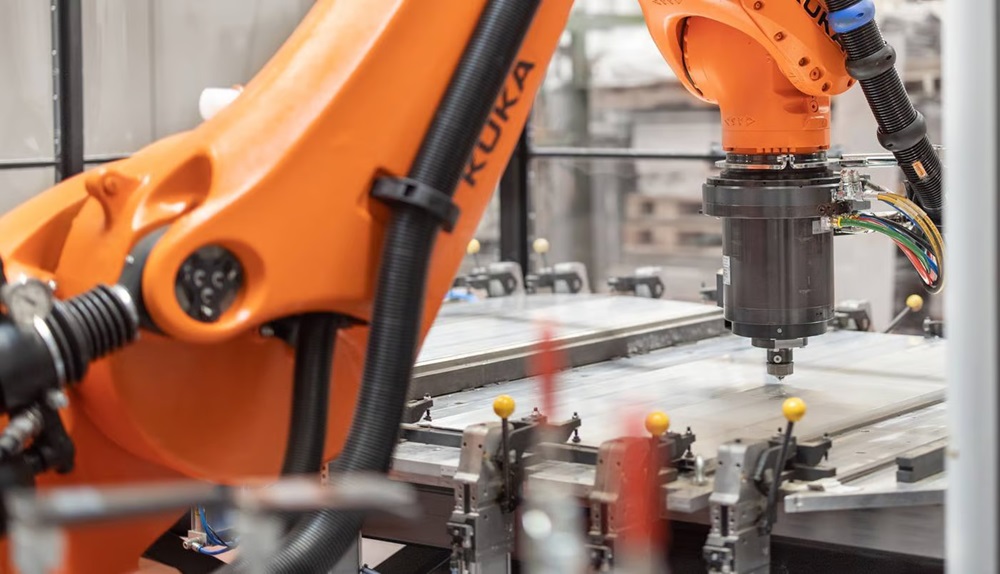Heckler & Koch USA (HKUSA), a designer and manufacturer of small arms and light weapons for military forces and law enforcement worldwide, has chosen Flexxbotics for robot-driven manufacturing with autonomous process control. Advanced robotic machine tending with Flexxbotics enables Heckler & Koch to increase capacity with precision quality, subsequently keeping up with strong demand and addressing labour challenges.
With Flexxbotics, HKUSA achieves a robot-enabled, multi-machine cellular-based set-up for machining complex-geometry parts. The robot will operate an Okuma five-axis vertical machining centre and an Okuma horizontal machining centre along with an integrated water dunk and blow-off station, a Hexagon CMM, Renishaw inspection probe, and SICK safety scanner – all within an individual work cell. Automating the complete process of machining and inspection results in an 87% capacity increase and 24:1 machine-to-man ratio.
“Our main goals with robotic automation are increasing throughput, maximising machine utilisation and creating flexibility to react quickly in line with production volume demands,” says John Mitchell, VP of operations at HKUSA. “Flexxbotics offers a unique ability to use the robot to co-ordinate multiple machines and have inline inspection results automatically correct the machining operations.”
The Flexxbotics solution connects the robot to each piece of equipment and co-ordinates the work so the robot has full command and control of the work cell. Using closed-loop feedback CMM inspection results, Flexxbotics writes offset-macro-variable changes to the CNC programs, thus ensuring all parts are built to specification for continuous operations using autonomous process control.
In addition, Flexxbotics communicates with the in-machine probes to ensure proper part seating before and after each CNC cycle. Based on the probe’s feedback, the robot either automatically removes and replaces the part or escalates the problem via text and email if there is a work-holding issue.
More information www.flexxbotics.com



















